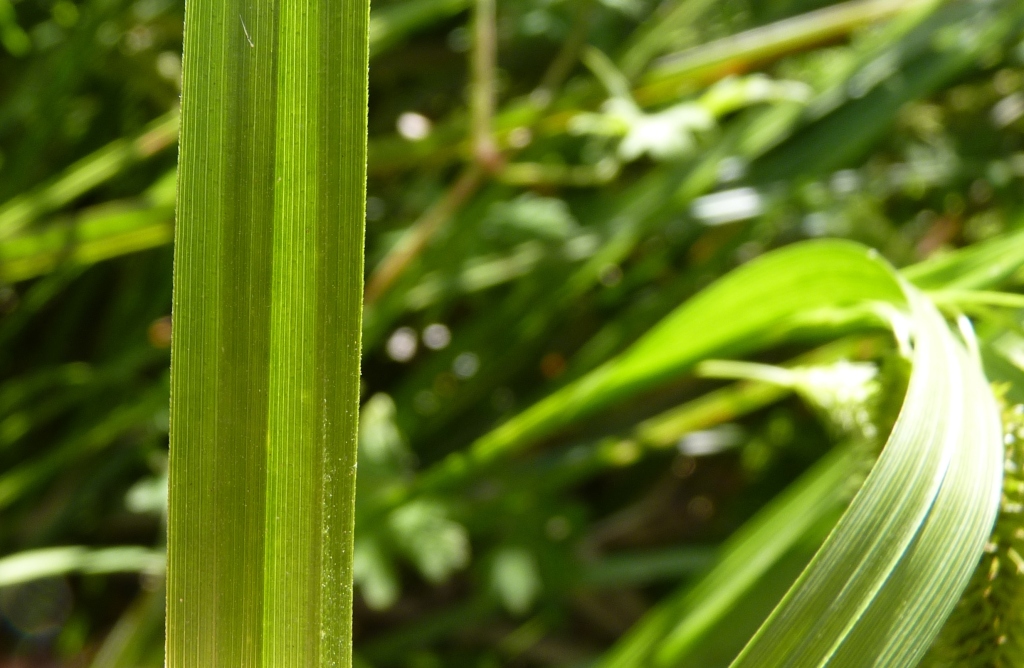Carex fascicularis
Sol. ex Boott Tassel SedgeRhizome short; shoots densely tufted. Culms erect, trigonous, smooth below, scabrous above, to 100 cm long, 2.5–3.5 mm diam. Leaves septate-nodulose (obvious when dried), mostly equalling culms, 6–13 mm wide; sheath yellow-brown, septate-nodulose; ligule acute. Inflorescence spreading, 6–25 cm long, with 3–6 spikes solitary at nodes; lowest involucral bracts exceeding inflorescence. Spikes long-pedunculate, contiguous, drooping at maturity, 2.5–8 cm long, fruiting spikes 8–12 mm diam.; uppermost spike male; lower spikes female or occasionally with a few male flowers at the apex; glumes acute, whitish to pale brown, with scabrous mucro to 4 mm long, margins of upper half fimbriate or lacerate; female glumes 3–6 mm long; utricles 5–7.5 mm long, 1.3–2 mm diam., ovoid to ellipsoid, stipitate, prominently several-nerved, glabrous, dark brown, spreading; beak 2–3 mm long, deeply split; style 3-fid. Nut obovoid, trigonous, yellow-brown. Flowers spring–summer.
GleP, Brid, VVP, VRiv, GipP, OtP, WaP, Gold, CVU, GGr, DunT, NIS, EGL, EGU, WPro, HSF, HNF, OtR, Strz, MonT, VAlp. All States except NT. New Guinea, New Zealand. Widespread and rather common on stream and swamp margins (bases sometimes submerged) in cooler, mostly lowland areas almost throughout the State.
A distinctive species often forming dense large tussocks, with septate-nodulose leaves and leaf sheaths (obvious when dried), leaves relatively wide, female spikes are long-pedunculate, broad, with the long utricle beaks giving the spikes a somewhat spiny appearance, drooping at maturity, and usually spaced below male spikes. The female glumes are long mucronate, and beak of utricle deeply divided into 2 stiff slender teeth. Very similar to Carex maorica (a New Zealand species) in appearance and habitat. C. maorica differs from C. fascicularis by the female spikes mostly sessile rather than pendent, and usually clustered at one level near the base of the male spike rather than mostly distant to ± approximate (but then never clustered at one level round base of male spike). Also similar to C. lurida (North American species, naturalised in New Zealand), which is a more robust species (up to 2.5 m tall), has shorter female spikes (2–4 cm long), utricles 6–9 × 2-4 mm, and beak ca. half the length of the utricle.
Wilson, K.L. (1994). Cyperaceae. In: Walsh, N.G.; Entwisle, T.J., Flora of Victoria Vol. 2, Ferns and Allied Plants, Conifers and Monocotyledons, pp. 238–356. Inkata Press, Melbourne.
 Spinning
Spinning



